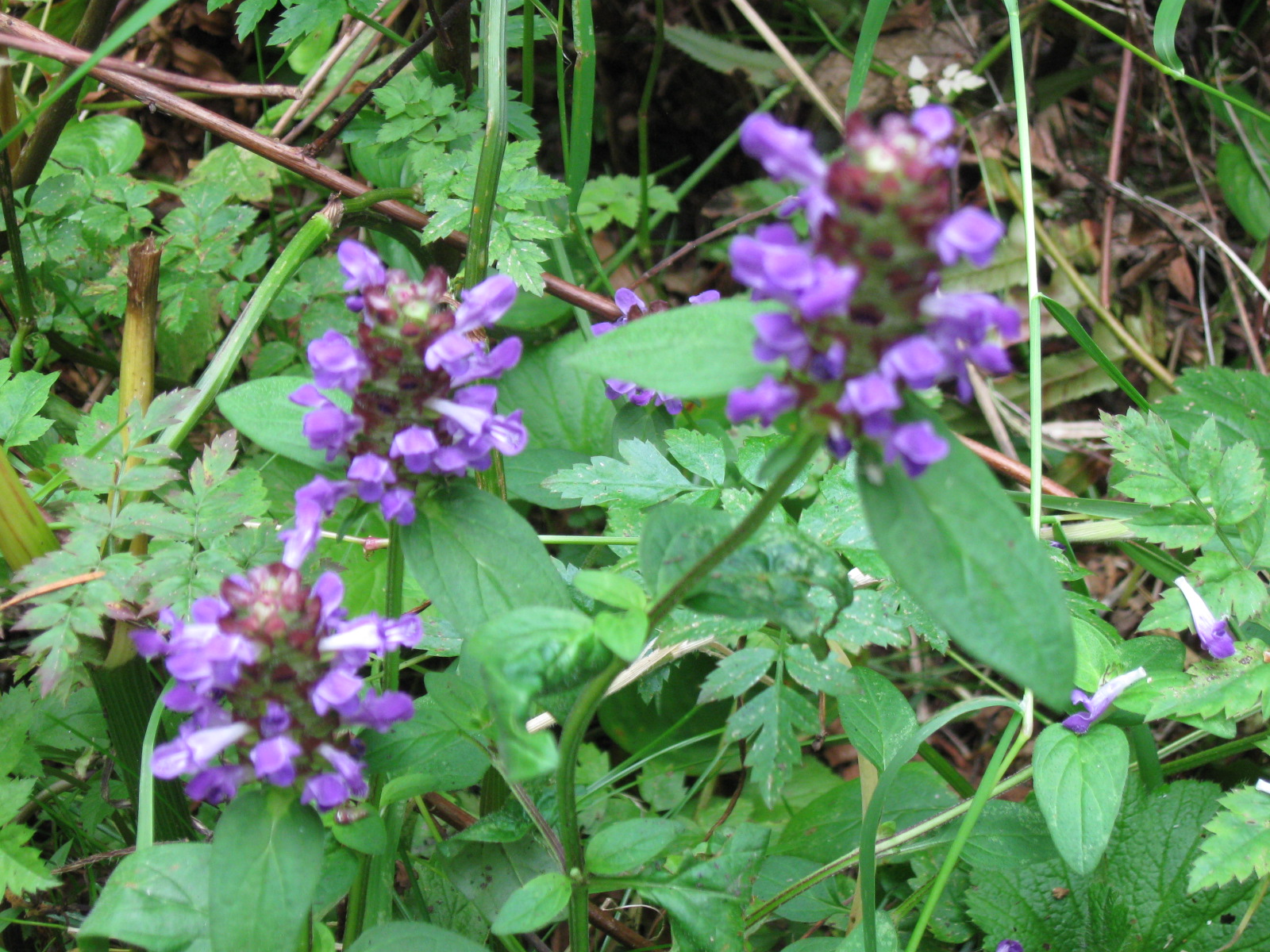Self heal
(Prunella vulgaris vulgaris)

Description
Prunella vulgaris vulgaris, commonly known as self-heal, is a small perennial plant native to Europe, Asia, and North America. It belongs to the family Lamiaceae, which includes other well-known plants such as mint and lavender. Self-heal has been used in traditional medicine for centuries and has many potential health benefits. In this article, we will explore the botanical characteristics, habitat, traditional uses, potential health benefits, and cultivation of Prunella vulgaris vulgaris. Botanical Characteristics Prunella vulgaris vulgaris is a low-growing plant that typically reaches a height of 10-50 cm. It has a creeping, woody stem that grows horizontally along the ground and sends up numerous upright shoots. The stem is square-shaped and can be hairy or smooth. The leaves of self-heal are opposite and lance-shaped, with serrated edges. The upper leaves are smaller and more narrow than the lower ones. The leaves are typically 2-6 cm long and 1-2 cm wide. The flowers of self-heal grow in dense, cylindrical spikes that are 2-6 cm long. The spikes are made up of numerous small, two-lipped flowers that are pink, purple, or blue in color. The flowers bloom from June to September and are attractive to bees and other pollinators. The fruit of self-heal is a four-parted nutlet. Habitat Prunella vulgaris vulgaris is a very adaptable plant and can be found in a variety of habitats, including meadows, woodland edges, and waste areas. It prefers moist, well-drained soil and can tolerate both sun and shade. Self-heal is native to Europe and Asia but has been introduced to North America, where it has naturalized and is considered an invasive species in some areas. Traditional Uses Self-heal has a long history of use in traditional medicine, particularly in China and Europe. The plant was used by the ancient Greeks to treat wounds and was also believed to have magical properties. The name "self-heal" comes from the plant's traditional use in treating minor injuries and ailments. In traditional Chinese medicine, self-heal is known as Xia Ku Cao and is used to treat a variety of conditions, including liver and gallbladder problems, sore throat, and high blood pressure. In European herbal medicine, self-heal was used to treat inflammation, fever, and digestive problems. Potential Health Benefits Modern research has confirmed many of the traditional uses of self-heal and has identified several potential health benefits of the plant. Here are some of the most promising findings: Anti-inflammatory: Self-heal has been shown to have anti-inflammatory properties, which may make it useful in treating conditions such as arthritis and inflammatory bowel disease. Antioxidant: Self-heal contains compounds that act as antioxidants, which may help protect against cellular damage and reduce the risk of chronic diseases such as cancer and heart disease. Antimicrobial: Self-heal has been found to have antimicrobial properties, which may make it useful in treating infections caused by bacteria and fungi. Wound healing: Self-heal has been used traditionally to treat wounds, and modern research has confirmed its ability to promote wound healing and reduce scarring. Immune support: Self-heal has been found to have immune-stimulating effects, which may help the body fight off infections and other diseases. Cultivation Prunella vulgaris vulgaris, commonly known as self-heal, is a hardy plant that is easy to grow and maintain. Here are the steps to cultivate this plant: Choose a location: Self-heal can grow in a variety of soil types but prefers moist, well-drained soil. It can tolerate both full sun and partial shade, so choose a location that gets at least 4-6 hours of sunlight a day. Prepare the soil: If your soil is heavy or clay-like, add some organic matter such as compost or well-rotted manure to improve drainage and soil structure. Plant the seeds: Self-heal can be propagated by seed, which should be sown in the spring or fall. Sow the seeds thinly, covering them with a light layer of soil. Water the soil gently but thoroughly. Water regularly: Self-heal prefers moist soil, so water the plants regularly, especially during dry spells. Avoid overwatering, as this can lead to root rot. Mulch: Mulching around the plants can help conserve moisture and suppress weeds. Use a layer of organic material such as shredded leaves or straw. Fertilize sparingly: Self-heal does not require heavy fertilization. A light application of compost or a balanced organic fertilizer in the spring can provide the necessary nutrients. Prune as needed: Self-heal can become invasive if left unchecked, so prune it back as needed to control its spread. Prune back after flowering to encourage new growth. Propagate by division: Established self-heal plants can be divided in the spring or fall. Dig up the clump and carefully separate the roots, replanting them in their new location. By following these simple steps, you can successfully cultivate Prunella vulgaris vulgaris in your garden. This versatile plant not only adds beauty to your landscape but also offers potential health benefits.
Taxonomic tree:







